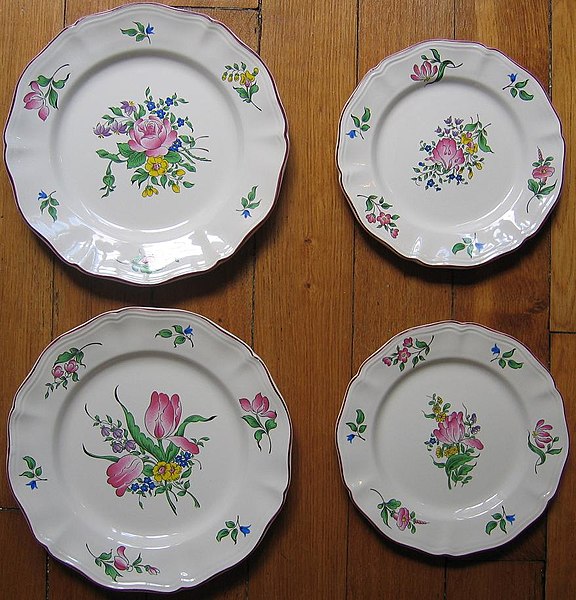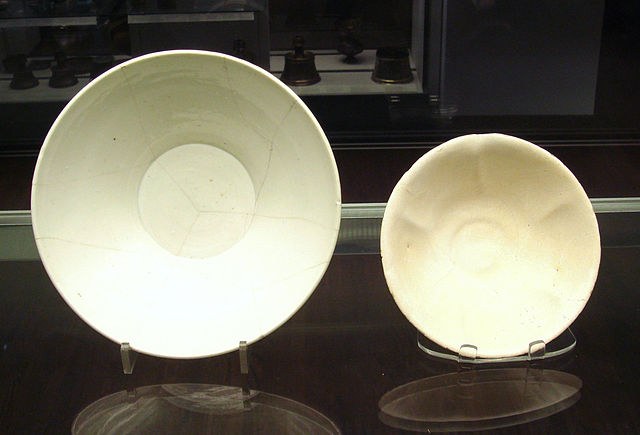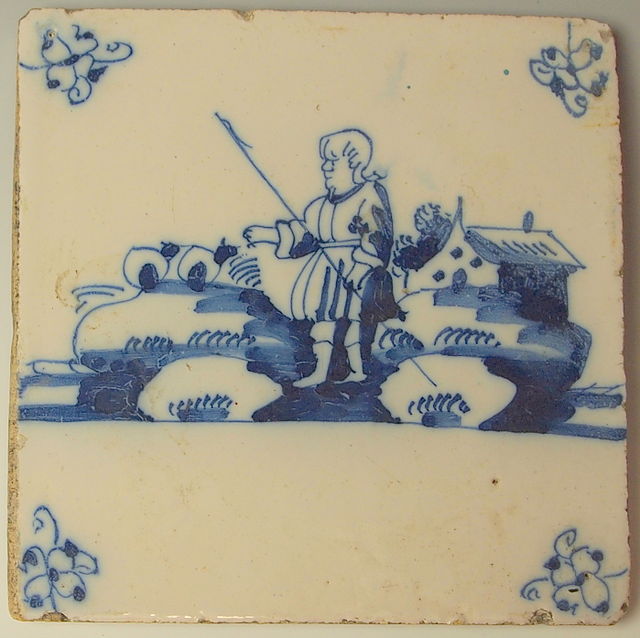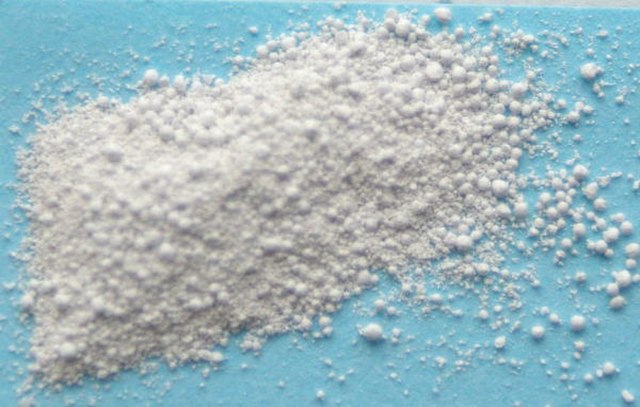Tin-glazing is the process of giving tin-glazed pottery items a ceramic glaze that is white, glossy and opaque, which is normally applied to red or buff earthenware. Tin-glaze is plain lead glaze with a small amount of tin oxide added. The opacity and whiteness of tin glaze encourage its frequent decoration. Historically this has mostly been done before the single firing, when the colours blend into the glaze, but since the 17th century also using overglaze enamels, with a light second firing, allowing a wider range of colours. Majolica, maiolica, delftware and faience are among the terms used for common types of tin-glazed pottery.
French faience, from Lunéville
Chinese porcelain white ware bowl, not tin-glazed (left), found in Iran, and Iraqi tin-glazed earthenware bowl (right) found in Iraq, both 9-10th century, an example of Chinese influences on Islamic pottery. British Museum.
Dutch delftware tin-glazed tile
Tin dioxide, the raw ingredient in Tin-glazing.
Tin-glazed pottery is earthenware covered in lead glaze with added tin oxide which is white, shiny and opaque ; usually this provides a background for brightly painted decoration. It has been important in Islamic and European pottery, but very little used in East Asia. The pottery body is usually made of red or buff-colored earthenware and the white glaze imitated Chinese porcelain. The decoration on tin-glazed pottery is usually applied to the unfired glaze surface by brush with metallic oxides, commonly cobalt oxide, copper oxide, iron oxide, manganese dioxide and antimony oxide. The makers of Italian tin-glazed pottery from the late Renaissance blended oxides to produce detailed and realistic polychrome paintings.
Maiolica charger from Faenza, after which faience is named, c. 1555; Diameter 43 cm, Tin-glazed earthenware
Tin-glazed (Majolica/Maiolica) plate from Faenza, Italy
Chinese porcelain white ware bowl (left), not tin-glazed, found in Iran, and Iraqi tin-glazed earthenware bowl (right) found in Iraq, both 9-10th century, an example of Chinese influences on Islamic pottery. British Museum.
A Hispano-Moresque dish, approx 32cm diameter, with Christian monogram "IHS", decorated in cobalt blue and gold luster. Valencia, c. 1430–1500. Burrell Collection







